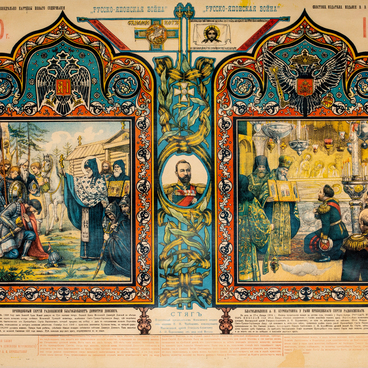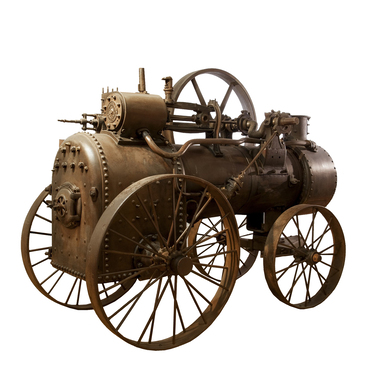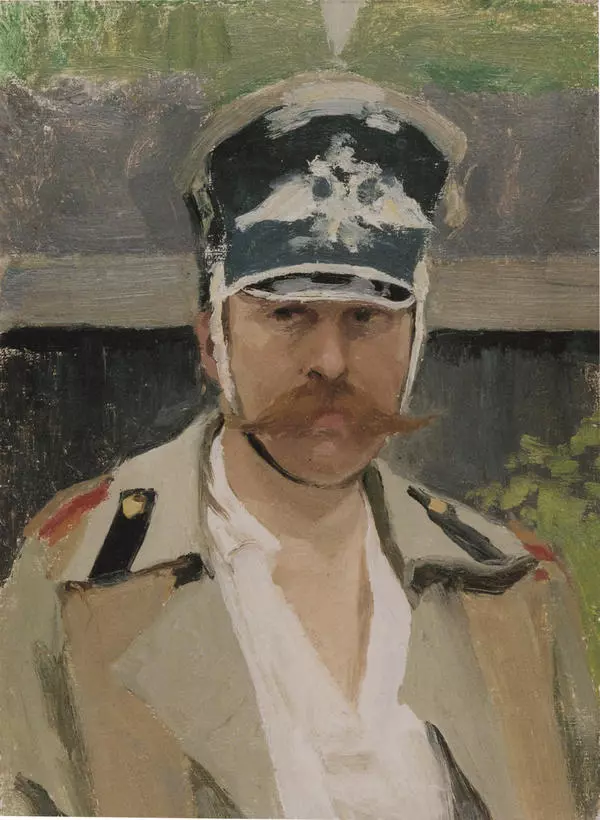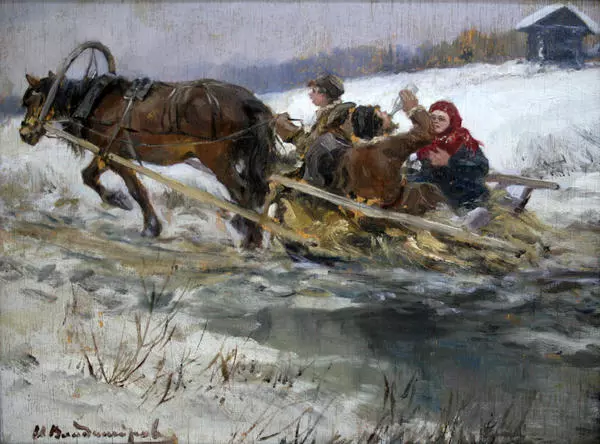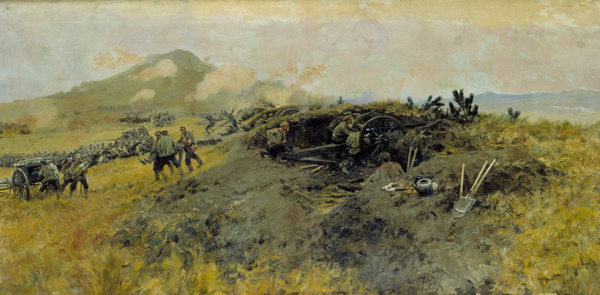The Flight of the Bourgeoisie from Novorossiysk was painted in 1926 by Ivan Vladimirov, a Russian and Soviet battle painter.
The artist was born in 1870 in the city of Vilna (nowadays Vilnius), in the family of famous English watercolor artist Elizabeth Wackhorn and priest Alexei Vladimirov. Researchers suggest that Wackhorn and Vladimirov Sr. met at the English Club where the latter worked as a librarian.
Ivan Vladimirov studied painting at the St. Petersburg Academy of Arts. While still a student, he developed an original realistic style and stuck to it throughout his career.
Vladimirov traveled a lot and made sketches from nature. For example, the sketches that he took during his summer trips to the Caucasus later became the basis for his paintings Dressing Point During the Caucasian war, Defeat of Kabardians on the Malka River, etc.
Upon graduation, Vladimirov worked as a combat correspondent on the fronts of the Russian-Japanese War, Balkan War and World War I. Even during the period of intensive hostilities, he continued to make battle sketches which he later turned into large-scale paintings.
Vladimirov’s artworks were popular not only in Russia. For example, he had business ties with the London-based art illustrated magazine Graphic, the French Illustration magazine, and several American magazines.
In 1917, Vladimirov worked for Petrograd Militia. During that period, he made a documentary series of sketches devoted to revolutionary events. In the same year, he joined the Association of Artists of Revolutionary Russia. He continued to depict military scenes, and also worked on historical and revolutionary subjects.
One of his paintings of that period was The Flight of the Bourgeoisie from Novorossiysk. Vladimirov depicted a real historical case: the evacuation of refugees during the offensive of the Red Army on Novorossiysk in March 1920. At that time, the main hostilities of the Civil War were taking place as close as 40 kilometers away from the city. The disorganized units of the White Army retreated to the Taman Peninsula. The Red Army soldiers pressed them in and killed not only ordinary soldiers and officers of the Don and Kuban armies, but also the civilian population. The armed forces of the South were forced to start a mass evacuation of local residents. They managed to send more than 33 thousand refugees from Novorossiysk to the Crimea, Serbia, Cairo, Malta and Constantinople.
The artist was born in 1870 in the city of Vilna (nowadays Vilnius), in the family of famous English watercolor artist Elizabeth Wackhorn and priest Alexei Vladimirov. Researchers suggest that Wackhorn and Vladimirov Sr. met at the English Club where the latter worked as a librarian.
Ivan Vladimirov studied painting at the St. Petersburg Academy of Arts. While still a student, he developed an original realistic style and stuck to it throughout his career.
Vladimirov traveled a lot and made sketches from nature. For example, the sketches that he took during his summer trips to the Caucasus later became the basis for his paintings Dressing Point During the Caucasian war, Defeat of Kabardians on the Malka River, etc.
Upon graduation, Vladimirov worked as a combat correspondent on the fronts of the Russian-Japanese War, Balkan War and World War I. Even during the period of intensive hostilities, he continued to make battle sketches which he later turned into large-scale paintings.
Vladimirov’s artworks were popular not only in Russia. For example, he had business ties with the London-based art illustrated magazine Graphic, the French Illustration magazine, and several American magazines.
In 1917, Vladimirov worked for Petrograd Militia. During that period, he made a documentary series of sketches devoted to revolutionary events. In the same year, he joined the Association of Artists of Revolutionary Russia. He continued to depict military scenes, and also worked on historical and revolutionary subjects.
One of his paintings of that period was The Flight of the Bourgeoisie from Novorossiysk. Vladimirov depicted a real historical case: the evacuation of refugees during the offensive of the Red Army on Novorossiysk in March 1920. At that time, the main hostilities of the Civil War were taking place as close as 40 kilometers away from the city. The disorganized units of the White Army retreated to the Taman Peninsula. The Red Army soldiers pressed them in and killed not only ordinary soldiers and officers of the Don and Kuban armies, but also the civilian population. The armed forces of the South were forced to start a mass evacuation of local residents. They managed to send more than 33 thousand refugees from Novorossiysk to the Crimea, Serbia, Cairo, Malta and Constantinople.
